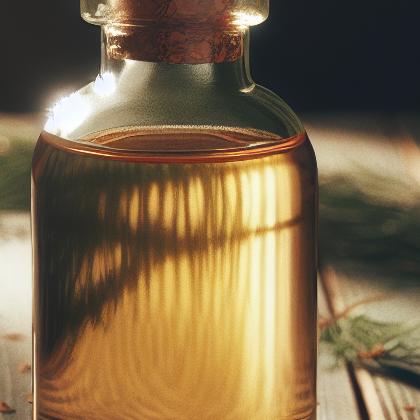Pine Oil

Pine oil is an essential oil obtained by the steam distillation of needles, twigs and cones from a variety of species of pine, particularly Pinus sylvestris.It is used in aromatherapy, as a scent in bath oils, as a cleaning product, and as a lubricant in small and expensive clockwork instruments. It is naturally deodorizing, and antibacterial. It may also be used varyingly as a disinfectant, massage oil and an antiseptic. It is also used as an effective organic herbicide where its action is to modify the waxy cuticle of plants, resulting in desiccation.Pine oil is distinguished from other products from pine, such as turpentine, the low-boiling fraction from the distillation of pine sap, and rosin, the thick tar remaining after turpentine is distilled.Chemically, pine oil consists mainly of cyclic terpene alcohols. It may also contain terpene hydrocarbons, ethers, and esters. The exact composition depends on various factors, such as the variety of pine from which it is produced and the parts of the tree used.
Pine oil Pairs With:

Pine oil Properties:
| Food Property | Type | Description |
|---|---|---|
| Aroma | Volatile Compounds | Pine oil contains volatile compounds that contribute to its characteristic aroma. |
| Color | Natural Pigments | Pine oil may have a slightly yellow or greenish color depending on the extraction process. |
| Chemical Composition | Acidity/Alkalinity (pH) | Pine oil typically has a neutral pH level. |
| Aroma | Essential Oils | Pine oil is rich in essential oils that give it its characteristic scent. |
Food Pairing App - Version 1.2.0
